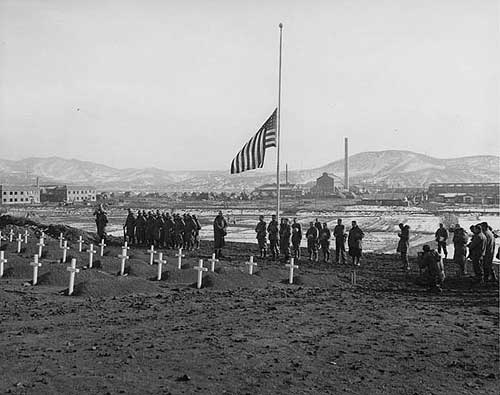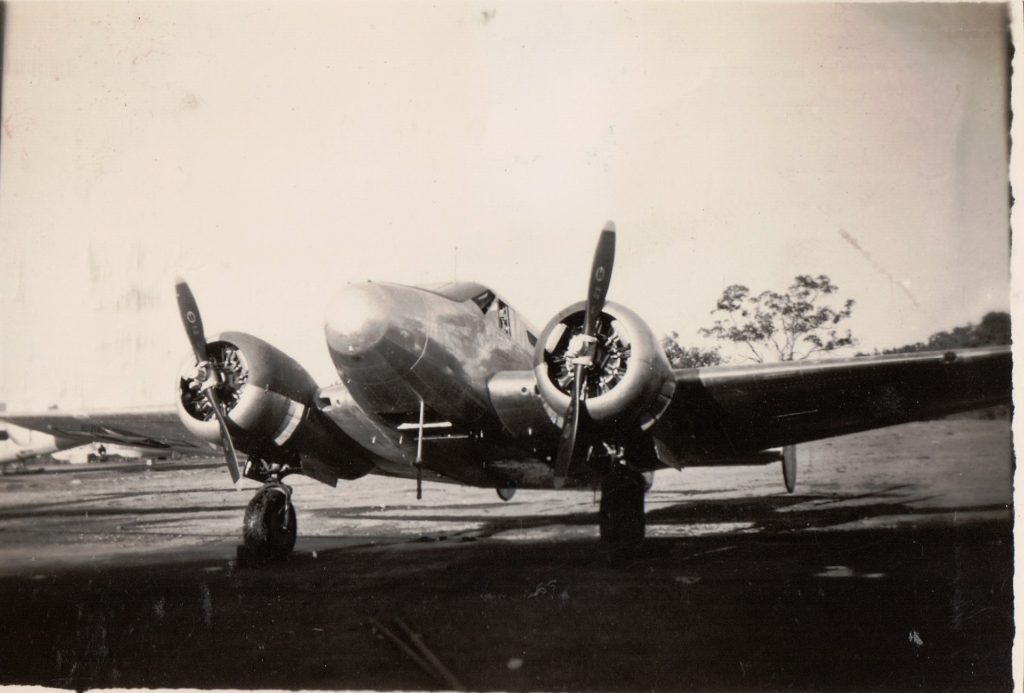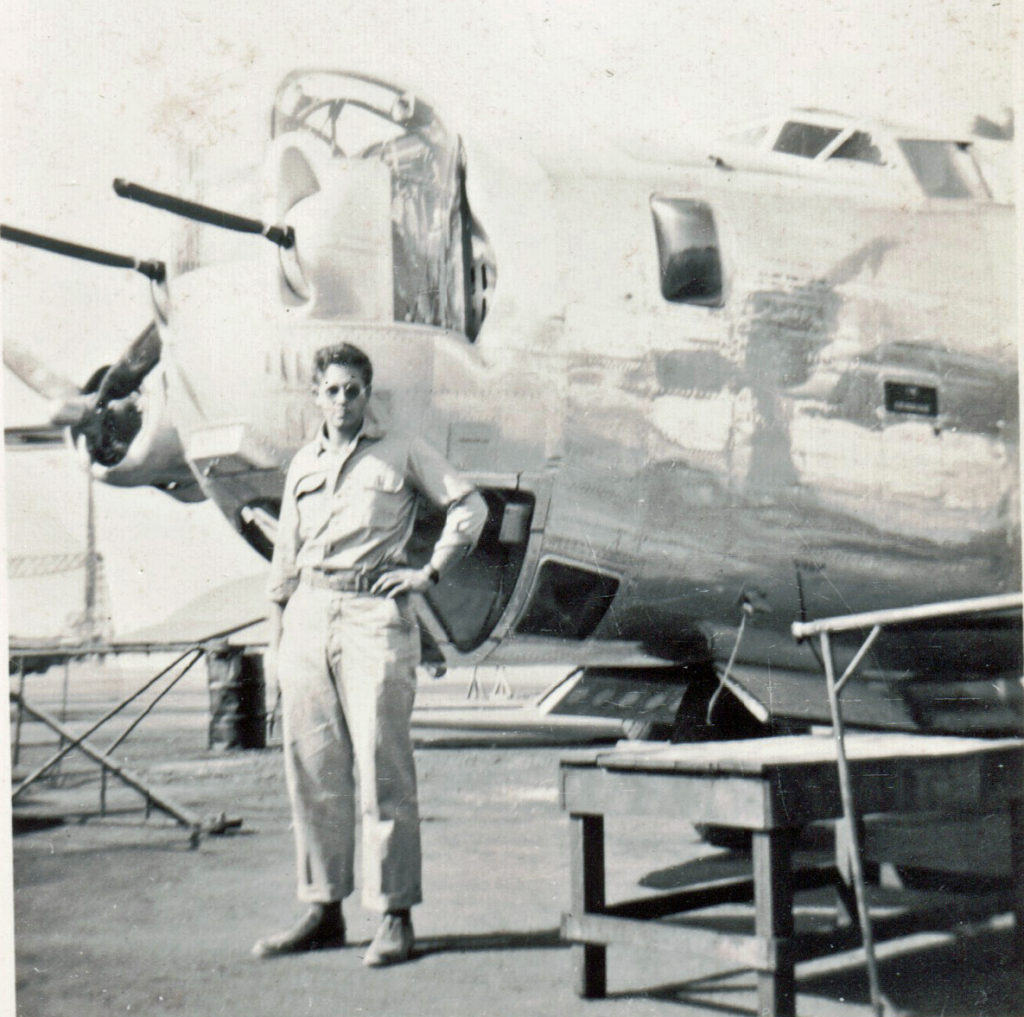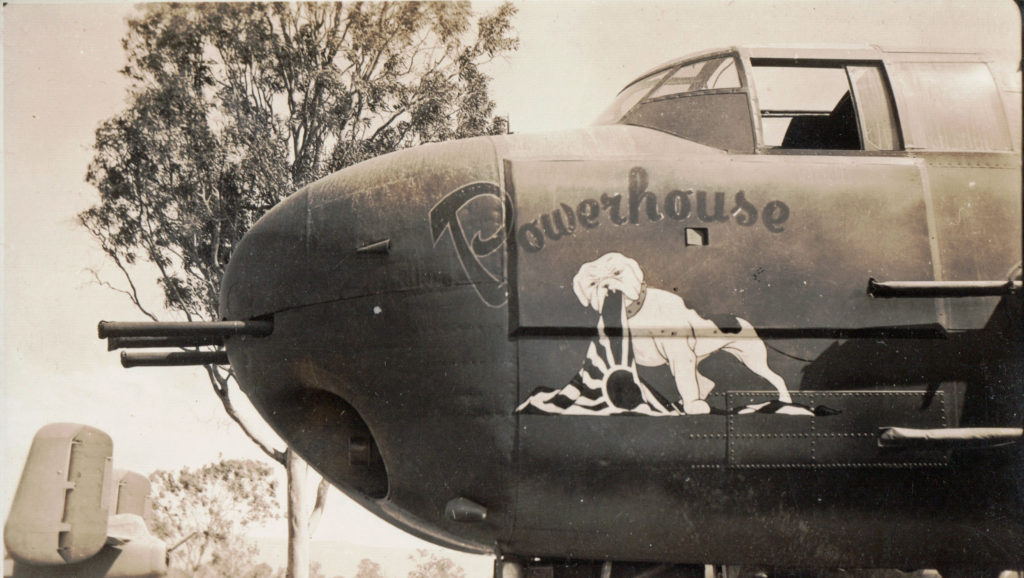Memorial Day 2021: World War II Airplanes

McMurray Family (Click for Family Tree)
Today, Memorial Day in the United States, we solemnly remember those who sacrificed all to protect our freedom and our democracy. While none of our direct ancestors gave their lives in war (that we know of), some returned with injuries, and some had brothers who did not return home. This quote, source unknown, makes one pause and be ever grateful to our men and women who died in service, and their families who have borne that pain ever since:
“Our flag does not fly because the wind moves it.
It flies with the last breath of each soldier who died protecting it.”

Following are some images of aircraft from World War II. These pictures were taken by Edward A. McMurray, or are pictures of Edward A. McMurray with aircraft he worked on as a mechanic while stationed in the South Pacific from 1944 to 1946. Ed, or “Mac” as he was more commonly known, was stationed in the Pacific theater in Australia, New Guinea, New Caledonia, possibly the Philippines, and some small islands such as Biak; he ended his time in the war in Japan, at the surrender of Japan on V-J Day. Mac served in the 3rd Engine Over-haul Squadron, 4th Engine Over-haul Squadron, and the 13th Depot Supply Squadron per his 1949 State of Iowa WW II Service Compensation application. (He was paid $345 for his service in the US, which was training, plus his time overseas. Today that amount is approximately equal to $3,700.)
These images are some of the planes that were flown by our men and women- yes, women ferried planes from place to place during WW II- and some air crews may have died in them to protect freedom around the world. Mac told of the grisly tasks of those in the aircraft engine overhaul department- sometimes there were body parts and blood in a plane, needing to be removed for proper burial and before the plane could be overhauled and repaired. It was a painful reminder of how fleeting a life could be, especially in times of war, for those who were so young and should have still felt immortal.
Please let us know if you can help with identification of the aircraft or the places.









Nose art was really big in World War II. Images on the nose of a plane were great identification on the ground or in the air, a part of the crew’s ego, and a boost to morale for male soldiers, especially if a pretty or scantily-clad woman was involved:


“Overshot” Nose Art, World War II aircraft in the Pacific theater, circa 1944-1946. Note image similar to W.C. Fields, a curmudgeon of a comedian who played up drinking a lot of alcoholic ‘shots.’ The crew of this ship likely had other types of shots in mind, at least until they were back safely at the airfield- then it was time to celebrate survival with the liquid version of ‘shots.’


And then there is this last photo- what could be going on here? There are two planes side-by-side- maybe a B-24 bomber and a fighter?- and the soldier on the ladder is probably taking pictures. Maybe it’s an air show, since at least one child is in the crowd and people are looking up. That seems a somewhat dangerous event during the days of World War II on a Pacific island, and a waste of fuel and flight hours on a plane… Maybe a new aircraft is showing off flight capabilities, or a VIP is headed to the base? Or a group of heroes who just successfully completed a strategic flight that helped to turn the tides of war is doing a victorious fly-by before they land… What do you think?

Notes, Sources, and References:
- Family treasure chest of photos.
- See also the following posts about Edward A. McMurray, Jr. in World War II:
- “Military Monday: Memorial Day and Edward A. McMurray, Jr.”– https://heritageramblings.net/2017/05/29/military-monday-memorial-day-and-edward-a-mcmurray-jr/
- “Veteran’s Day: Honoring Edward A. McMurray, Jr.”– https://heritageramblings.net/2014/11/11/veterans-day-honoring-edward-a-mcmurray-jr/
- “Military Monday: Edward A. McMurray, Jr. in the Pacific Theater of WWII”– https://heritageramblings.net/2014/09/08/military-monday-edward-a-mcmurray-jr-in-the-pacific-theater-of-wwii/
- “Edward A. McMurray, Jr. at the Surrender of Japan, 02 Sep 1945”– https://heritageramblings.net/2014/09/02/edward-a-mcmurray-jr-at-the-surrender-of-japan-02-sep-1945/
- “Sorting Saturday: Armed Forces Day”– https://heritageramblings.net/2016/05/21/sorting-saturday-armed-forces-day/
- “Military Monday: Memorial Day and Edward A. McMurray, Jr., again”– https://heritageramblings.net/2021/05/30/icymi-military-monday-memorial-day-and-edward-a-mcmurray-jr/
Click to enlarge any image. Please contact us if you would like an image in higher resolution.
We would love to read your thoughts and comments about this post (see form below), and thank you for your time! All comments are moderated, however, due to the high intelligence and persistence of spammers/hackers who really should be putting their smarts to use for the public good instead of spamming our little blog.



!["US landings" by General MacArthur's General Staff - MacArthur, Douglas (1994) [1950] Reports of General MacArthur (Vol. 1 ed.), Center of Military History, p. 432.](https://heritageramblings.net/wp-content/uploads/2014/09/1942-1945_WWII-US_landings-in-Pacific-300x210.jpg)



